Curtiss P-37
XP-37
In early 1937 the USAAC expressed an interest in furthering development of the P-36 by
replacing the type's radial powerplant with a turbosupercharged inline engine. Curtiss
responded by fitting an Allison V-1710-11 with a turbosupercharger to the original Model 75
prototype... and the XP-37 was born, flying for the first time in April of 1937.
The Curtiss company designation was Model 75I and, owing to the extensive modifications
made to the original airframe, it was presented to the US Army in June of 1937 as a completely
new aircraft. The Army designated her 'XP-37' and the serial number 37-375 was assigned.
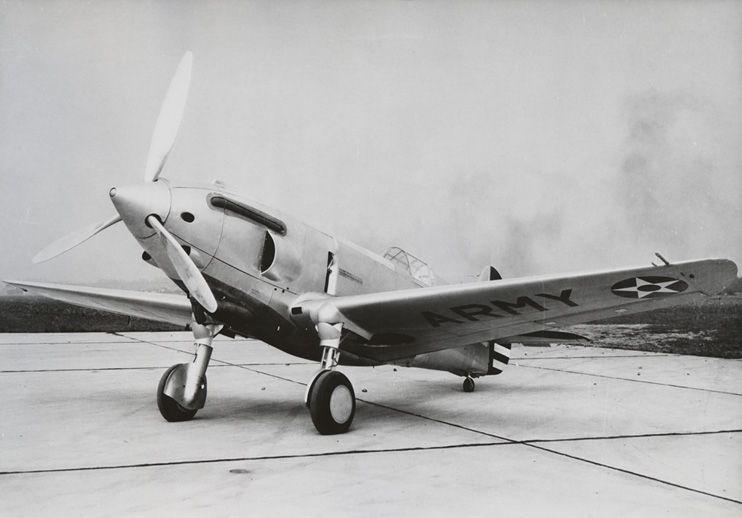
Project 914 Archives (S.Donacik collection) -
Larger Image
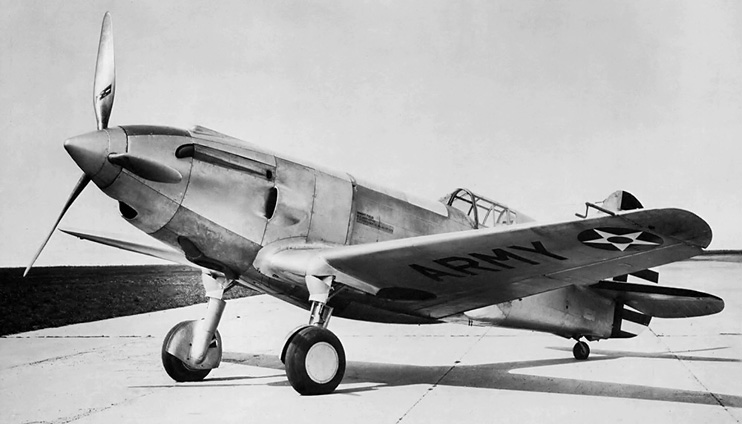
Project 914 Archives -
Larger Image
The XP-37 at Wright Field, probably in the Summer of 1937.
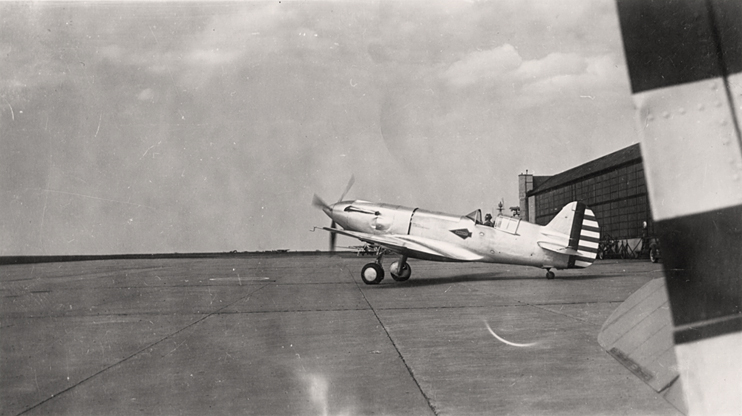
Project 914 Archives (S.Donacik collection) -
Larger Image
A closer look...
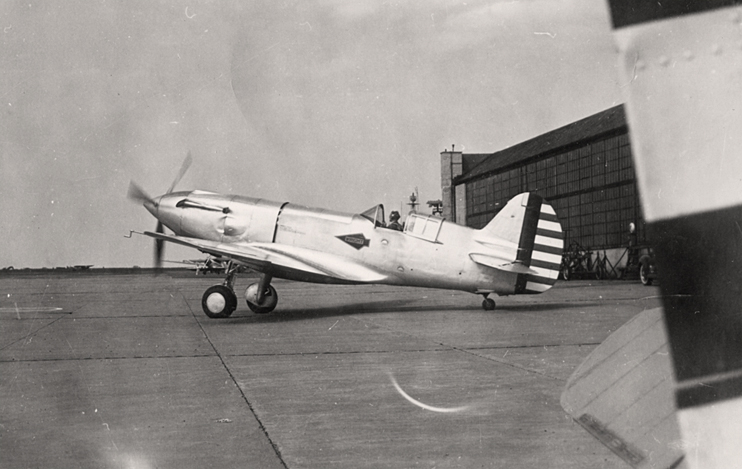
Project 914 Archives (S.Donacik collection) -
Larger Image
On a test-hop out of Wright Field...
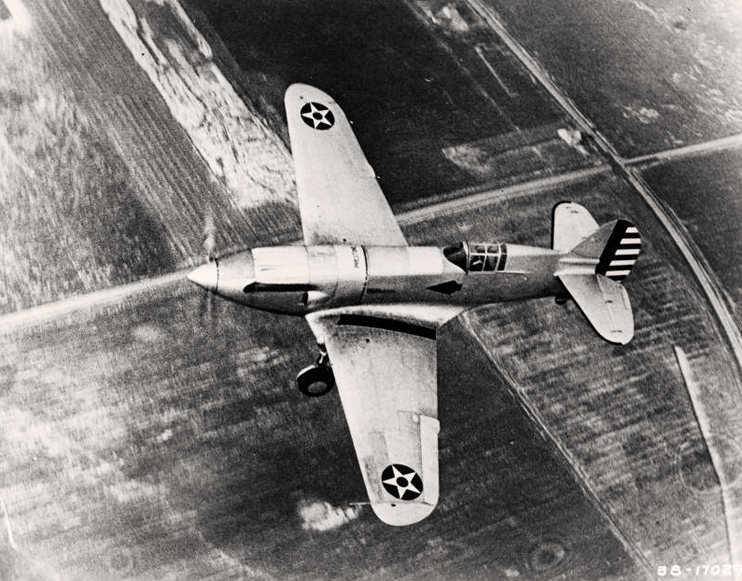
San Diego Air and Space Museum Archives -
Larger Image
YP-37
Though the XP-37 experienced great trouble with the supercharger, the Air Corps saw
potential in the design and thirteen YP-37 service-test models were ordered in December of
1937. The first YP-37 flew in June of 1939 with an Allison V-1710-21, improved supercharger,
and other improvements and changes, including aerodynamic refinements and a longer fuselage.
The YP-37 continued to suffer trouble with the supercharger as well as other difficulties, and
the project was adandoned in favor of another Curtiss design that was already showing much
greater promise; the P-40. By early 1942, after having flown with a number of operational
Air Corps outfits, all but one of the YP-37s had been retired to AAF technical schools.
You can read a bit more about the XP-37 and YP-37
HERE.
The first YP-37, serial number 38-472 at the Buffalo Airport in June of 1939.
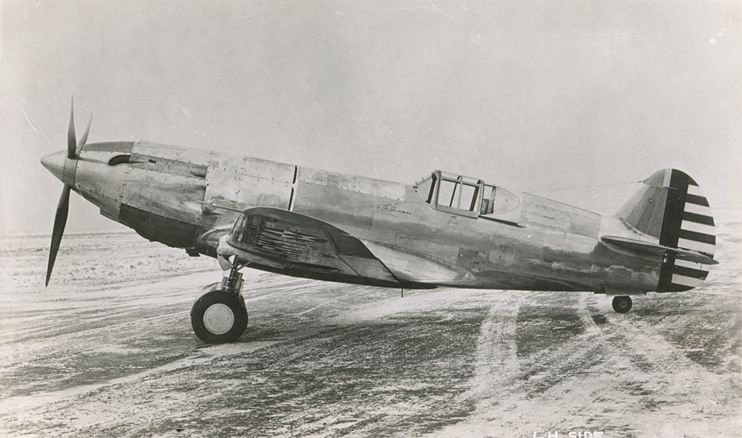
Project 914 Archives (S.Donacik collection) -
Larger Image
A closer look at the data block and canopy...
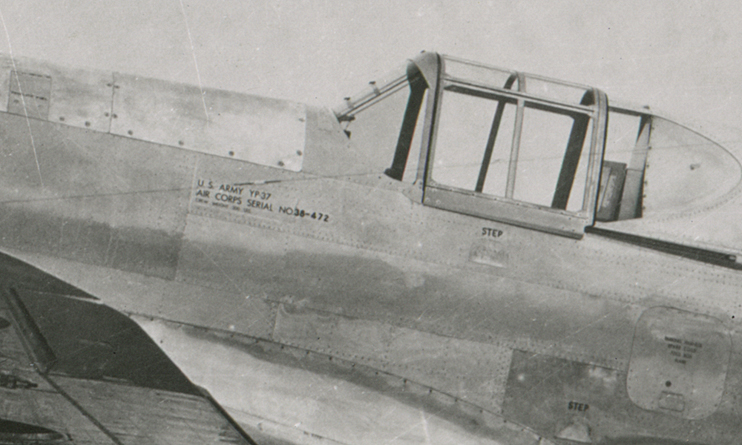
Project 914 Archives (S.Donacik collection) -
Larger Image
This ship was assigned to the 33rd Pursuit Squadron, 8th Pursuit Group. The date
and location are unknown, though it's likely that this was taken at Langley Field.
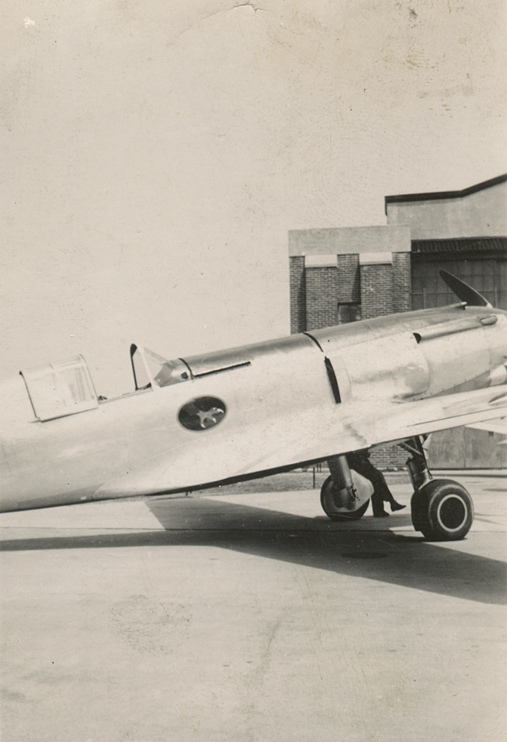
Project 914 Archives (S.Donacik collection) -
Larger Image
Ship #52 of the 35th Pursuit Squadron, 8th Pursuit Group, probably at Langley Field.
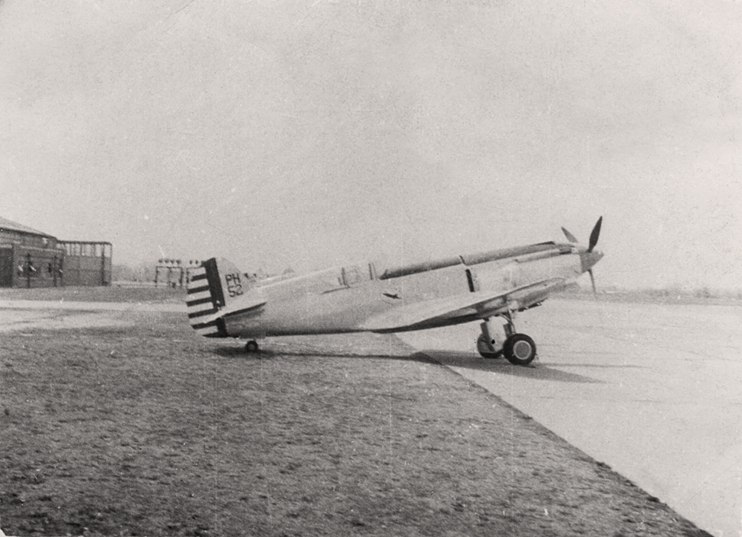
Project 914 Archives (S.Donacik collection) -
Larger Image
These next three photos show YP-37s flown by the 36th Pursuit Group.
This first shot showing ship #95 of the 32nd PS was taken at Chanute Field in 1940.
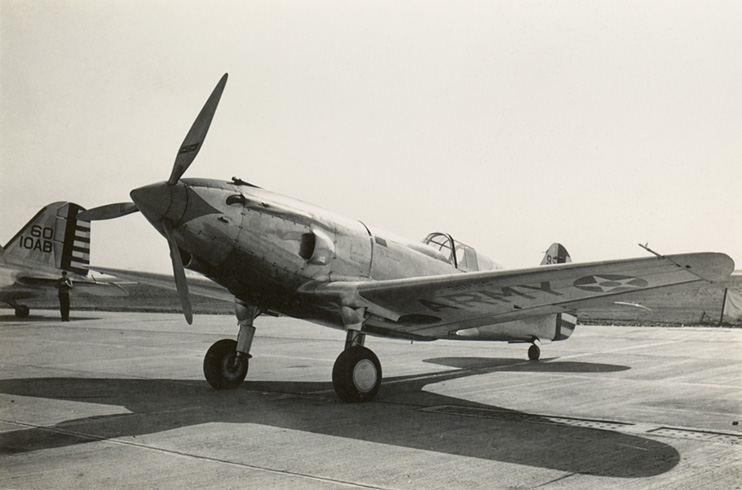
Project 914 Archives (S.Donacik collection) -
Larger Image
Ship #26 of the 22nd Pursuit Squadron, location unknown, 1940.
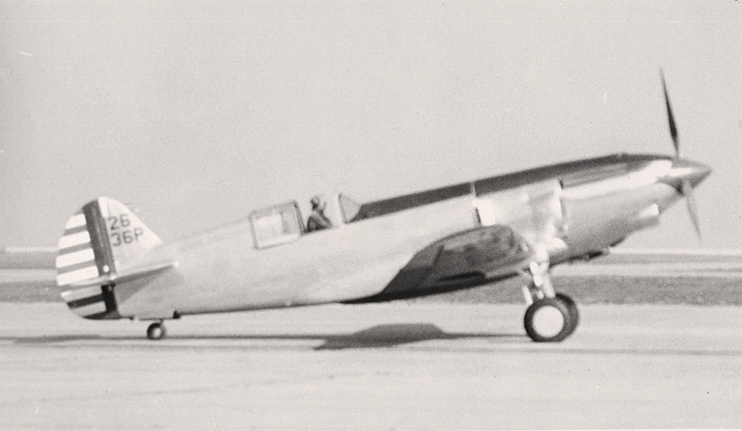
Project 914 Archives (S.Donacik collection) -
Larger Image
This shot of YP-37 38-474 was taken by the legendary Rudy Arnold on September 26th, 1940,
presumably at Langley Field, Virginia, though I am not absolutely certain of the location.
This ship was the last of the YP-37s in active service when it was transferred to the NACA
in August of 1942. There she was used for research work, surviving 'til at least 1946.
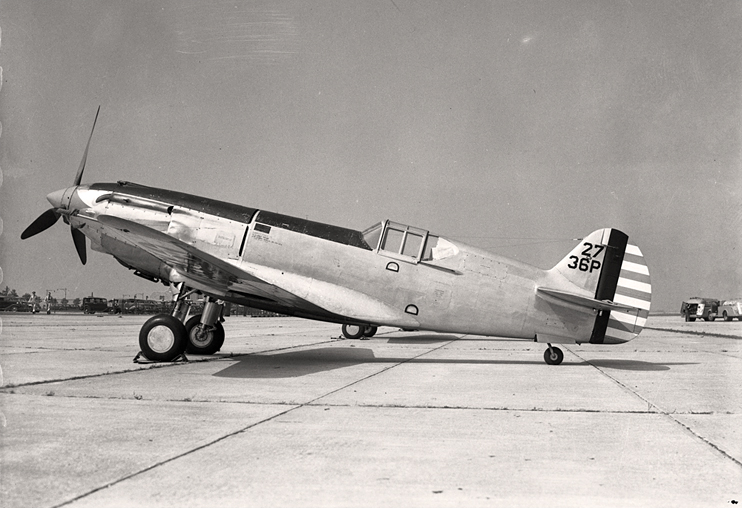
National Air and Space Museum Archives (Rudy Arnold Photo Collection) -
Larger Image
A closer look at the data block...
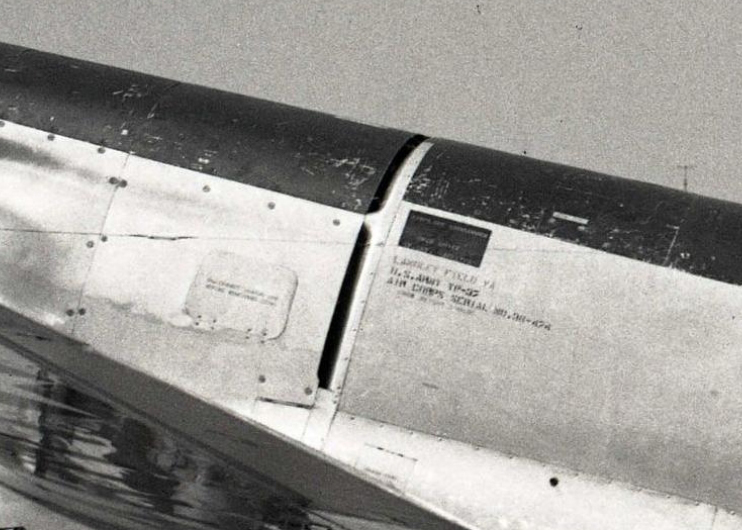
National Air and Space Museum Archives (Rudy Arnold Photo Collection)
I have no info for this photo of ship #28 of the 36th PG, but it's a beaut...
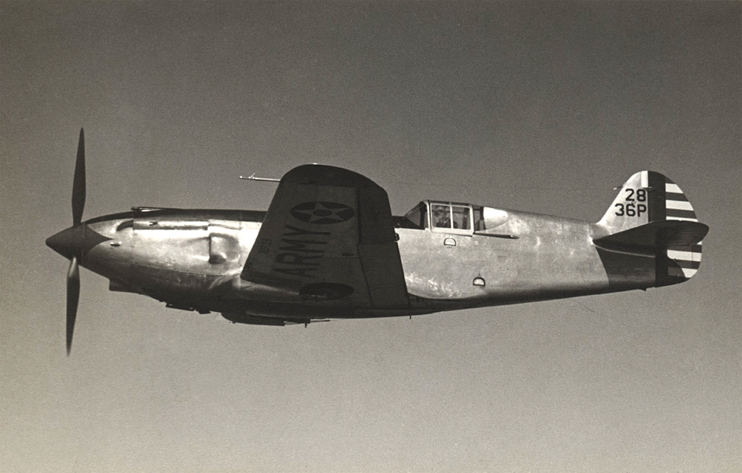
Project 914 Archives (S.Donacik collection) -
Larger Image
Her days of active service at an end, this YP-37 of the 10th Air Base Squadron at Chanute
Field, Illinois was likely used as an instructional airframe for mechanics in training.
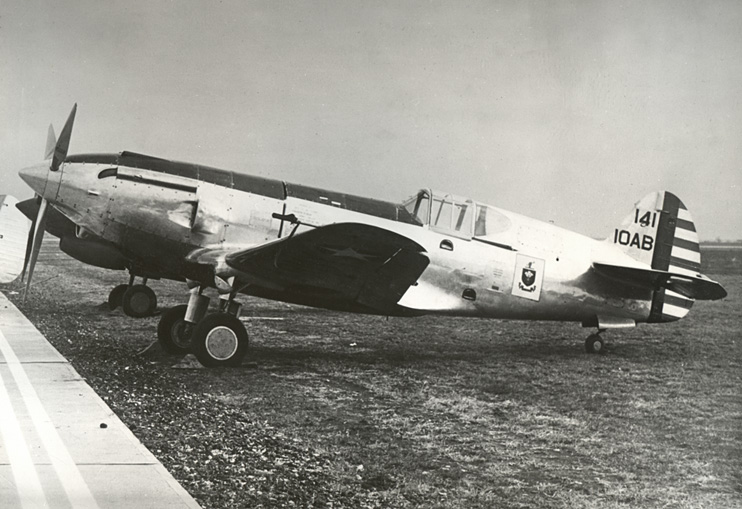
Project 914 Archives (S.Donacik collection) -
Larger Image
Back to 'Other Curtiss Aircraft'









